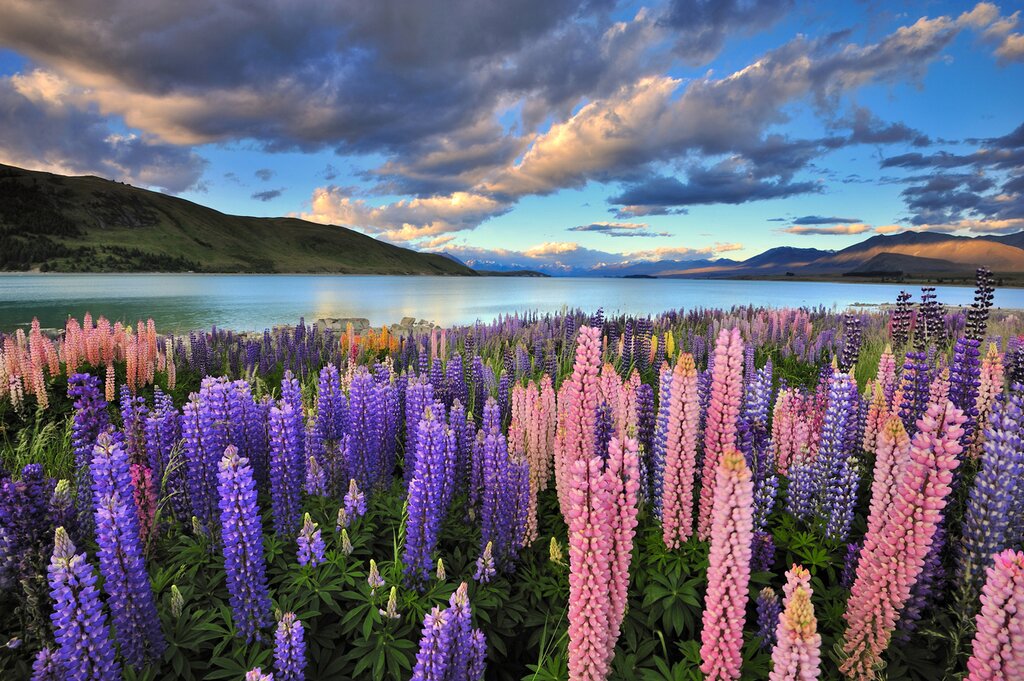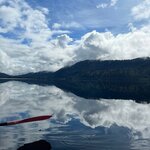Weather
New Zealand is about 870 miles (1,400 km) long, from Cape Reinga in the north to Bluff in the south, so there's a lot of climatic variation. Northern Northland is subtropical, while southern Southland is cool and temperate. Between the two extremes are areas of high alpine conditions and relatively warm coastal areas. In general, New Zealand is quite a wet country, and rain should be expected at any time. But summer is normally the driest time of year. Water restrictions aren't uncommon in some parts of the country, which may not see significant rain for six weeks or two months over summer. This means conditions in January are good for spending time at the beach or for hiking.
January (along with February) is the hottest time of year throughout the country, with highs of around 77°F (25°C) in Northland, Auckland, the Coromandel, other parts of the upper North Island, and even some parts of the South Island, such as the area around Nelson, parts of Canterbury, and parts of Central Otago. Being an island nation, the temperatures don't tend to get extremely high (nothing like neighboring Australia, for instance), but it's not unusual for some of the abovementioned places to get above 86°F (30°C) at times in the summer, sometimes for days at a stretch.
At the same time, parts of the country can be quite cool in the summer, with unseasonal (but not necessarily unusual) snowfall in alpine areas. The average summer high in Queenstown, in the south of the South Island and surrounded by mountains, is a cooler 71°F (22°C).
Be aware that forest fires are an increasing occurrence in New Zealand in the summer, and while these haven't (yet) reached the severity of those that happen in Australia or parts of the USA, it's important to be aware of this risk when out and about in nature in the dry, hot summer. Please be mindful of fire safety, especially when smoking. Dispose of cigarette butts properly, as they can easily ignite dry vegetation.
Crowds & Costs
January is peak tourism season in New Zealand. Between mid-late December and late January/early February, primary and secondary schools are out for summer vacation. New Zealand families travel around their own country or spend time at their local beaches, lakes, rivers, and other attractions. Popular camping areas can book out months in advance this month, as locals often have a favorite spot that they return to every year. "Free camping" is frowned upon in many parts of the country, and legislated against in some, so if you plan to camp in January, make sure you've done your homework about where is available and accessible.
If you plan to cross the Cook Strait between Wellington and Picton on the Interislander Ferry this month, make sure to schedule your passage well ahead of time. Again, locals make this trip and book tickets in advance, plus there's an influx of overseas visitors now that it's the high season. In general, accommodation prices are higher in January, and you may have to pay more for domestic flights too, as popular routes are in demand.
Where to Go
There's no bad place to go in New Zealand in January. If you want to spend time at the beach, you'll be spoiled for choice. Northland and the Coromandel Peninsula have some of the best beaches in the country, but they also get the busiest in January. For a less busy beach experience, drive down the east coast of the North Island and see what you come across (the west coast of both islands tends to be less suitable for swimming because of wilder seas with stronger currents and heavier surf).
There's also no shortage of amazing day or multiday hikes to try. The most popular trails (such as the Department of Conservation's 10 "Great Walks") can get pretty busy in January, with accommodation en route (DOC huts and campsites) booking up. Unless you have your heart set on doing them, avoid the Tongariro Alpine Crossing or the Abel Tasman Coast Track in January, as these get a lot of visitors, potentially straining the infrastructure and environment. There are plenty of other trails throughout the country that don't have the same volume of visitors.
This is a good time to make a road trip to see the mountains, especially in the south. Road conditions are at their best, and the mountains look beautiful in the sun! Aoraki / Mount Cook is New Zealand's highest mountain, and easily accessible from Christchurch.
Chat with a local specialist who can help organize your trip.
What to Do
January is an ideal time to hit the beach, whether that's just lazing on the sand, swimming, or trying water sports like surfing, standup paddleboarding, or kayaking. Surf Life Saving patrols have a presence on many popular beaches, daily throughout the school holidays and just on weekends thereafter through the summer. Swim between the flags if there they're present.
As mentioned above, January is also a good time to go hiking. Although conditions can be hot and sunny, you're less likely to encounter problematic rain. New Zealanders themselves love to hike, so wherever you go in the country, you won't be far from a trail.
City sightseeing and cultural activities can also be enjoyed in January, from the museums and galleries of Auckland, Wellington, and Christchurch, to the important historical sites of the Bay of Islands and the amazing natural features of Rotorua and Taupō.
Events in January
World Buskers Festival, Christchurch. This late-January festival brings together local and international street performers, musicians, magicians, jugglers, and more for fun events over a couple of weeks.
ASB Classic Tennis, Auckland. Watch some of the biggest stars in tennis play over two weeks in January.
Traveling to New Zealand in January? Check out these great itineraries
New Zealand North Island Explorer - 9 Days. Ideal for adventure lovers and active travelers, this self-drive itinerary features the best of North Island. Board an ocean safari for dolphin watching in the Bay of Islands, explore New Zealand's rich Maori history, and experience the mighty power of the Pacific Ocean at Cape Reinga.
Wild New Zealand: Auckland, Tongariro, Wellington, Kaikoura, Christchurch & Queenstown - 16 Days. Enjoy some of New Zealand's most beautiful and exhilarating wilderness experiences of both the North and South Islands. Starting in Auckland, you'll head down to the Tongariro National Park for off-the-beaten-path hiking and biking adventures. Pass through Wellington on your way to the South Island, where majestic mountains await. Spot whales in Kaikoura, hike in the Southern Alps, stargaze in some of the darkest skies in the world, and much more.
More Helpful Information
New Zealand in December
New Zealand in February
Best Time of Year to Visit New Zealand
How Many Days to Spend in New Zealand

